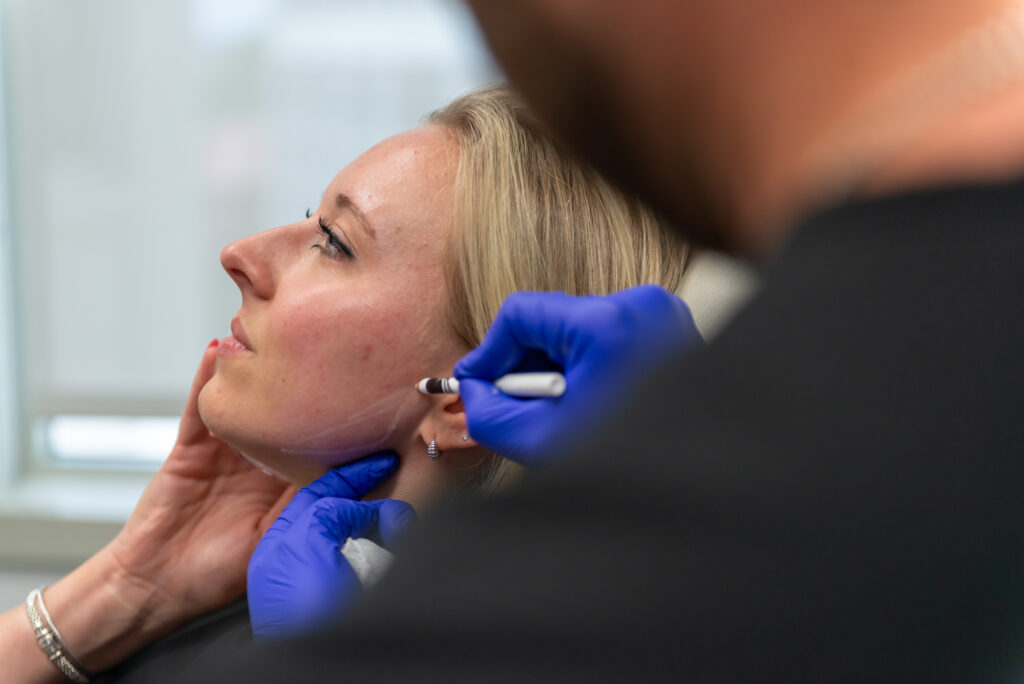Face Mapping — What It Is & How It Works
While the main structures of the human face are similar from person to person, every face is unique. This is why every Botox, or neuromodulator, treatment to treat wrinkles should begin with facial mapping.
In order to achieve the exact results you’re after, our experienced injectors will develop customized treatment maps before making that first injection. Face mapping is a tool that enables us to create a natural and proportioned facial appearance, achieving the best outcome with the least side effects. Landmarks, such as facial veins and arteries, are identified to prevent complications of vascular occlusion.

What Are Botox Injection Patterns?
Each Botox map shows a specific injection pattern that the provider believes will achieve the best results. This pattern is based on general guidelines for the procedure being performed, then tailored to the patient’s specific needs. At Bloom Plastic surgery we meticulously map and record all injection sites and units to ensure a reproducible, individualized result.
How to Identify Botox Injection Sites
Each approved Botox treatment has its own general injection pattern. This pattern shows the number of injection sites and roughly where each is located on the patient’s face.
To identify the exact location of each injection site in a custom Botox map, providers must:
- Locate the muscle or muscle groups to be treated
- Pinpoint the correct location for each injection within those muscles, based on evidence-based training for the procedure being performed
- Look for obstacles or local contraindications that could reduce efficacy or cause complications, such as fatty deposits or blood vessels
- Determine the proper dosing (in units) for each injection
Examples of Botox Treatment Patterns on the Face
Here are some treatment pattern examples for three common cosmetic procedures.
Crow’s Feet
Treating the fine lines known as crow’s feet typically requires four to eight injections around the corners of the eyes. All target the orbicularis oculi, the muscles that surround the lateral sides of the eyes. Dosing is usually two to four units per injection site.
Forehead
The forehead is dominated by the frontalis, a large, flat muscle extending upward from the brows. Injection points across the forehead can be manipulated based on the desired outcome. For instance, sometimes you may want to create a brow lift. You would achieve this by altering your Botox injection pattern slightly.
Due to this muscle’s size and anatomical variation, forehead Botox maps vary widely, from just four or five injection sites to more than 15 injection sites. Dosing is usually low — one to two units per injection site.
Frown Lines (Glabella)
Injections to treat frown lines, or ‘11’ lines, target several muscles in the glabellar area between and above the eyes.
The typical treatment pattern includes five injection sites, with one in the middle of the glabella, two on its edges, and two further along the brow line. Depending on the depth of the lines, dosing ranges from two to six units per site.
Schedule Your Treatment
If you’re curious about neuromodulators, such as Botox and Dysport, we recommend booking a consultation. During this consultation, we will talk about your desired results, budget, and condition of your skin.
